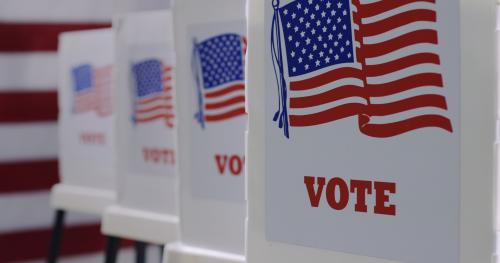In any comparison of healthcare costs in rich countries, the United States is an extreme outlier. This is true both in terms of the percentage of its income devoted to health and the absolute level of our health spending per person.
The U.S. has always been a high-spending country, but the difference with other countries has widened over time. International statistics on health outlays suggest the share of our GDP devoted to health was about 40 percent higher than the average for other rich countries in the 1970s. The differential increased substantially during the 1980s and early 1990s and then continued to widen, though more slowly, in later decades. By 2010 the U.S. health share was almost 7.2 percentage points of GDP (or 70 percent) higher than the health spending share in countries with comparable incomes. We can describe that estimate in a slightly different way: The United States spent about $7,500 per capita on health care compared to an average of $3,300 in other rich countries.
If the nation obtained better-than-average health outcomes in exchange for its much-higher-than-average health spending, we would have little reason to complain. However, there is almost no evidence U.S. health outcomes are better than those in other rich countries. A variety of statistics on mortality and morbidity suggest outcomes may be worse in this country than they are elsewhere.
The nation’s ever-increasing health bill has had a little-noticed impact on our income distribution statistics. That’s because of the way we pay for most health care and the way most income statistics are reported. Less than a quarter of the cost of the health care we consume is paid for with our cash incomes. Most is financed by the government or reimbursed through insurance purchased by our employers. The share of our cash household income needed to pay for health care and health insurance premiums has actually fallen over the past half century. The share paid by our employers through employee health plans has increased, and the share paid by government insurance plans has increased dramatically.
It is rare for standard income distribution statistics to reflect employer and government spending on health benefits. Nearly all the widely reported estimates of the trend in median income, for example, omit the additions in health care consumption that are paid through employer and public health plans. The omission tends to produce an overstatement in common estimates of the growth in U.S. income inequality. The reason is straightforward. The value of health insurance benefits is more equally distributed across the population than is the distribution of cash income. As Americans’ incomes have become more heavily tilted toward expensive health benefits, our standard measure of income has become a more misleading indicator of the goods and services (including health care) that Americans can buy with their incomes.
The Congressional Budget Office (CBO) recently published income distribution statistics that include the value of health benefits. Those statistics show faster income gains and a smaller increase in inequality than earlier estimates. For example, the Census Bureau’s estimates of cash incomes show that average incomes in the bottom one-fifth of households only increased 7% between 1979 and 2009 compared with an increase of 13% in the middle one-fifth of households. In contrast, the CBO’s estimates imply that the gross incomes (including health benefits) of these households increased much faster. In the bottom one-fifth of households, the CBO estimates show real income gains of 35%; in the middle one-fifth of households, estimated gross incomes climbed 21%. If we focus on after-tax income gains, the percentage increases in income were even larger.
Not all of the differences between the Census and CBO estimates are traceable to the inclusion of health benefits in the CBO’s definition of gross income. Still, the inclusion of health benefits makes a big difference. For the average U.S. household, gross income excluding health benefits increased 35% between 1979 and 2009. In comparison, estimated health benefits per person increased 205%. Counting health benefits has a bigger impact on estimated income gains in the middle and at the bottom of the income distribution than it does at the top. That’s because health benefits are a bigger proportion of total income for households in the middle and at the bottom of the distribution than they are for households at the top.
The percentage increase of gross income in the top 1% of the income distribution is essentially unchanged whether health benefits are included or excluded from the calculation. To be sure, health benefits have been increasing rapidly for households at the top of the distribution as they have for families with less income. In 2009 the CBO estimates that employer and government health benefits accounted for only 1% of the pre-tax incomes of the top 1%. In comparison, such benefits accounted for 15% of the pre-tax incomes of households in the middle one-fifth of the income distribution. Thus, the rapid increase in the share of our income devoted to health care has had a bigger proportional impact on middle-income and poor households than it has on the rich.
Nothing in the latest CBO estimates undermines the basic finding of past research that incomes at the top of the distribution have increased considerably faster than incomes in the middle and at the bottom. However, the new estimates suggest that income gains in the bottom 80% of the distribution have been more egalitarian than widely believed.
A sizeable part of the difference is traceable to CBO’s inclusion of health benefits in income at their full cost to employers and the government. Whether these benefits should be included in household income on a dollar-for-dollar basis is an open question. Other rich countries spend substantially less than the U.S. to provide health care to their citizens. Statistics on health outcomes suggest these countries obtain similar health gains even though they spend a lot less. For that reason, critics of the U.S. health system doubt whether the sizeable increases in employer and government reimbursement for medical care should be counted as equivalent to other kinds of income gain. It is essential to include such benefits if we want to accurately measure the full cost of the health benefits we receive. It is less clear whether we should include such benefits at cost if we want to measure the welfare gains they produce.


Commentary
Op-edWith Health Care Costs, the U.S. Is a Huge Outlier
August 7, 2012